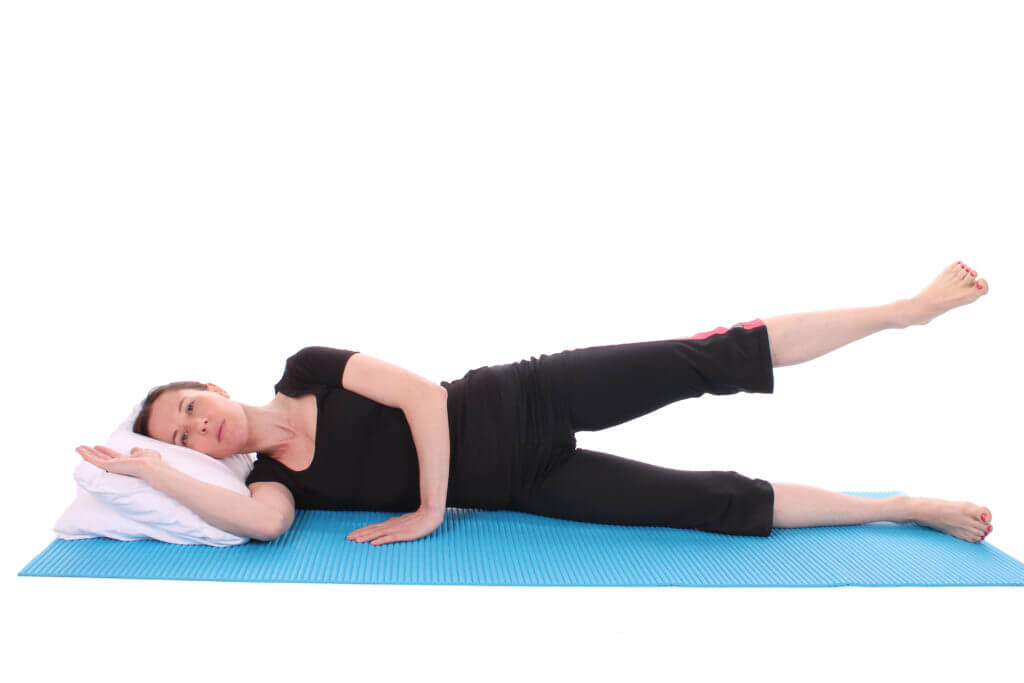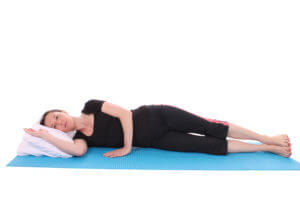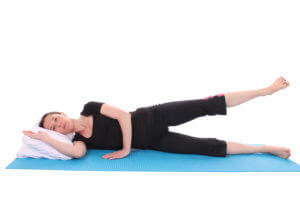Side-lying hip abduction – simple yet effective gluteus medius exercise

Gluteus medius weakness has been studied extensively and much of the research demonstrates that strengthening of this muscle can be beneficial for improving lower limb biomechanics and reducing symptoms in conditions such as patellofemoral pain.
So what is one of the best exercises to improve strength in this muscle? Functional weight bearing training is extremely important, no doubt, but in early stage rehabilitation if you want to give this muscle a good stimulus to adapt and get stronger then you can’t go too far wrong by prescribing side-lying hip abduction. Simple? Yes. Effective? Yes – according to the research.
Distefano et al 2009 showed that this exercise produced a signal amplitude of 81% MVIC, which was greater than the single leg squat and single leg deadlift. Ekstrom et al 2007 also concluded it is effective for non–weight-bearing strength training of the gluteus medius muscle although they demonstrated a lower signal amplitude than DiStefano. Giphart et al 2012 showed that when this exercise was performed in external rotation it was very effective at recruiting piriformis, an important external rotator of the hip.
Furthermore side-lying hip abduction has been included in exercise programs demonstrating the effectiveness of hip strengthening for reducing patellofemoral pain (Dolak et al 2011; Earl et al 2011; Fukuda et al 2010; Fukuda et al 2012). That’s good evidence in our opinion.
Like any exercise, if it is not done correctly then it will be ineffective. A cheat move is to roll your pelvis backward, therefore improving the mechanical advantage of other muscles to lift the leg. Also some patients will hitch their pelvis during the lift, as opposed to isolating the movement at the hip joint. Progressions can be made by adding weight to the distal ankle. The exercise images and instructions are below.


Start position: Lie on your side with your head supported, knees straight and feet together.
Action: Lift your top leg off your bottom leg as high as possible without rotation of your pelvis. Return to the start position.
Key points: Ensure your pelvis does not rotate backwards during the lift.
REFERENCES
Start your free 30 day trial now
Discover what TrackActive Pro can do for you and your patients with a no risk, 30 day, free trial.